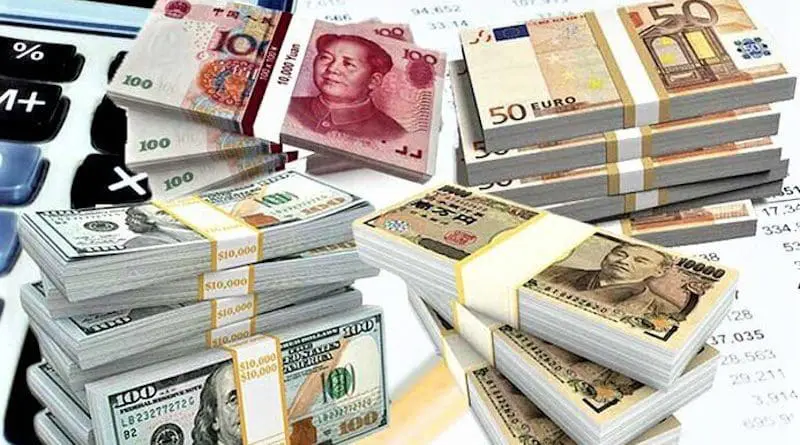Currency Wars: Dollar Vs. Yuan – OpEd
By Ayesha
In the primitive human era when reliance was solely on hunting or agriculture as means of subsistence, life was simple. There was no concept of storing value in any form, nor was it a problem then. Gradually, the market came into existence using barter to store and exchange value. Barter was the simplest blueprint of a functional market, but it had its own shortcomings. At this juncture, the idea of currency was born, and its ascent eventually led to a modern market system. Mayans used some unusual chocolate as a currency. Similarly, dolphin teeth were used as a currency by the traders of Solomon Islands.
The ascent of money is synonymous with the evolution of civilization itself. The idea of backing currency in circulation with gold and other valuables for ensuring confidence in currency became essential because the paper currency itself has no intrinsic value. The idea of backing a currency’s worth was to control its supply because printing currency without creating any value means the existing currency will lose its value. One such example is of Rhode Island, where the government printed currency worth 100,000 pounds in a single month, consequently plunging the value to zero. When creditors refused to accept the currency, they were forced to accept it. The state of the economy was so bad that people called it Rogue Island.
Today, the competition between rival states manifests itself in almost every field but the friction between currencies always tops the list. Today, two currencies engaged in the strategic arena of the global financial system are the U.S. dollar and Chinese yuan. The dollar owes its ascendency to the intricate geopolitical games and historical events starting with the Second World War. The vast British empire in its fight for survival got so fatigued that it became impossible to control its colonies. The rise of nationalism and the wave of decolonization receded the empire behind the English Channel. In its quest to stop Nazi Germany’s advances in Continental Europe, Britain took the toll along with its allies. The only country emerging powerful from this tumultuous period was the United States. Moreover, under the Nixon administration, when the gold standard was abolished, the dollar became the strongest anchor of the global financial system.
After the unprecedented U.S. material capabilities induced reckless adventurism in its foreign policy and experimentation with democratization and nation building across the signs of weakness eventually became prominent. During all this time, China worked tirelessly to shift the control of global supply chains in its favour. The United States was previously engaged with an economically much weaker rival and emerged victoriously from the cold war, but China is a different story. Kishore Mahbubani has rightly pointed out the fact that the Soviet Union at its peak performance could not cross 35% of the U.S. economy, but China is on a different trajectory.
In April 2023, China’s forex reserves stood at a staggering $3.205 trillion along with gold reserves of more than $132 billion. Similarly, other states including US allies are also showing concerns about the dominance of the dollar in the global economy. Emmanuel Macron urged the European countries to reduce reliance on the dollar on one hand and and France’s Total Energies completed its first LNG trade in the Chinese yuan through the Shanghai Petroleum and Natural Gas Exchange. Likewise, Brazilian President Lula Da Silva signalled the need for an alternative arrangement among BRICS members to minimize the excessive influence of the dollar on global trade. BRICS countries are home to about 3.27 billion people, which make up around 41% of the world population. Among BRICS countries two most populous and rapidly developing countries are China and India. These statistics help put the entire debate of an Asian century into context.
The friction between the dollar and the yuan is likely to intensify in the future but apparently does not appear to be taking a backseat regarding global trade. Barry Eichengreen and Camille Macaire contend that the yuan has some potential for internationalization but is not easy to de-dollarize. The signs of fatigue and weariness resulting from foreign wars are obvious, but one must not forget the cycles of U.S. history. The U.S. has emerged more powerful after every period of disengagement and retrenchment. However, the U.S. defy all odds against its economic pre-eminence and preserving the utility of its most important weapon in its economic arsenal is yet to be seen.
*Ayesha is the student of Political Science at the International Islamic University, Islamabad. Her areas of interest include major powers’ competition and the politics of South Asia.

